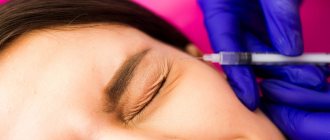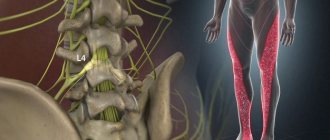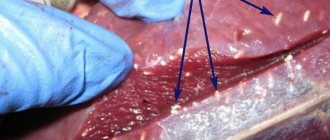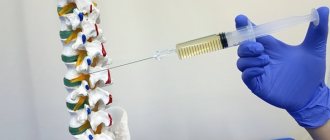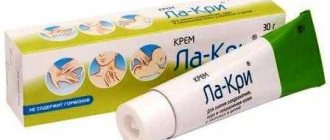“Beauty requires sacrifice” - this is how almost every headline in popular publications begins, or sounds from the lips of familiar beauties who have already seen this from their own experience.
Sacrifice concerns a low pain threshold in females. After all, most beauty procedures involve mainly injections.
But, fortunately, a separate group of drugs has already been developed, which is designed to reduce or relieve the patient of pain during the procedure, and these are anesthetics. Some of the oldest drugs that are in demand among most people, and without which it is impossible to imagine surgical interventions.
Today our article will be devoted to situations that, unfortunately, can happen in the office of every cosmetologist - allergic reactions to anesthetics, namely lidocaine.
If a critical situation arises related to an allergic reaction to anesthetics, we recommend that you immediately proceed to action.
Anesthetics in cosmetology and “pain management” by cosmetologists
In most cases, any ordinary and potential client of a cosmetology salon has three basic wishes and expectations from a future doctor’s visit:
- safety;
- efficiency;
- painlessness.
All qualified specialists know that pain can cause fainting, hypertensive crisis and even myocardial infarction.
In addition, it is worth noting that when we feel pain, our body releases a certain amount of inflammatory mediators, which directly affect the rate of restoration of the skin and damaged tissues. Therefore, it is not surprising that anesthesia has become a legal and important part of cosmetology.
But not everything is so smooth, even with the help of anesthetics. Because there is always a risk of having an allergy to painkillers.
Types of anesthesia that can be used in cosmetology:
- Local application anesthesia.
- Infiltration anesthesia.
- Conduction anesthesia (perineural and endoneural).
We will also consider the main types of anesthetics that are widely used in cosmetology:
- Esters (procaine, dicaine, butamben)
- Amides (lidocaine, articaine, prilocaine)
Amide MAs, unlike ether MAs, are stable in solutions and are slowly hydrolyzed by liver microsomal enzymes. Therefore, amides may have a toxic effect on the body of those patients who have certain liver disorders due to the extended half-life of the drug.
Allergic reactions to anesthetics are an unpleasant side of pain management procedures, but they are present in cosmetology practice. Every specialist should know the correct procedure in the event of critical situations such as anaphylactic shock.
Anaphylactic shock - emergency care
One of the most dangerous types of complications is anaphylactic shock - an acute and immediate allergic reaction to antigens, which in 10-20% of cases has fatal consequences (without timely administration of adrenaline). Therefore, the reaction and actions of a cosmetologist must be instant and accurate.
First aid for anaphylactic shock
- 0.1% adrenaline solution 0.2-0.5 ml intravenous / sublingual injection every 15-20 minutes. (until the patient's condition stabilizes).
- If anaphylactic shock develops after injection of the drug - 0.15 - 0.3 ml of adrenaline hydrochloride 0.1% in the place where the allergen was injected.
- Dexamethasone – 8 mg (intravenously).
- Antihistamine drugs of the 2nd and 3rd generation - Tavegil, Loratadine, Cetrin, Telfast, Erius.
- Further treatment should be aimed at maintaining a normal level of blood pressure (if necessary, use vasoconstrictors, restore bcc), eliminating bronchospasm - administering Euphyllin 2.4% intravenously and slowly (10 ml), Drotaverine hydrochloride (NO-SPA) 40 mg intravenously.
- Hospitalization in a specialized department of a medical hospital.
True allergic reactions to drugs, with the participation of immunological mechanisms, develop quite rarely, and account for 1% of all drugs included in this group.
Allergic reactions of the immediate type (with the participation of IgE) can manifest themselves in the form of urticaria, angioedema, symptoms of allergic rhinitis, conjunctivitis and anaphylaxis reactions, the most dangerous of which is anaphylactic shock.
As for lidocaine, it is used as a local anesthetic for various cosmetic procedures, such as: peeling sensitive and hypersensitive skin; removal of papillomas; when introducing fillers; applying/removing cosmetic stitches or thread lifting procedures (mesothreads).
When to see a doctor
When are certain actions necessary for anaphylactic shock? If a person has these symptoms:
- a sharp decrease in blood pressure;
- the patient lost consciousness;
- convulsions appeared;
- severe pallor, shortness of breath, and accidental urination are noted.
Previously, before such states, a person has a feeling of heat, fear of death, pain in the chest, head, etc. There is a pronounced allergic reaction and other phenomena.
For all of these conditions, which may indicate anaphylactic shock, emergency assistance is called immediately. The patient will continue to need medical supervision. It is necessary to be examined by an allergist and, as necessary, consult other specialists. If a person has experienced anaphylactic shock, he will definitely need the advice of a professional specialist.
The mechanism of action of lidocaine and its scope of application
After injection into soft tissues, lidocaine reduces the permeability of cell membranes to sodium ions. Already after 45-90 seconds after the administration of lidocaine, the speed of nerve impulses decreases and the pain syndrome decreases. The duration of action of lidocaine ranges from 1 to 1.5 hours, depending on the chosen dose of the drug.
There are different forms of lidocaine that are used for local anesthesia: sprays, gels, creams, ointments and injections.
The most popular cosmetic procedures - bioreparation, biorevitalization, contour plastic surgery, mesotherapy, thread lifting - are associated with pain.
Allergic reactions to lidocaine
There are three degrees of development of allergic reactions of the human body to the action of an allergen:
I – mild degree of reaction
Dermatological symptoms (itching, redness, peeling of the skin, urticaria, allergic rhinoconjunctivitis).
The doctor must have in the medicine cabinet non-fluorinated GCS creams and antihistamines of the second and third generation + potassium-sparing diuretics.
II – average degree of reaction
• Hives, itching
• Angioedema (Quincke's edema)
What to do if these symptoms occur:
- Call an emergency medical team.
- A 0.1% solution of adrenaline 0.2 - 0.5 ml must be administered subcutaneously every 15 - 20 minutes until the client’s condition stabilizes, or 60 mg Prednisolone / Dexamethasone - 8 mg intravenously.
- Taking second and third generation antihistamines: Loratadine, Cetrin, Telfast, Erius. Protease inhibitors and kallikrein Kontrikal (30 - 40 units intravenously in 300 ml of 0.9% NaCl solution)
- Eczematous dermatitis, erythema multiforme, fever (up to 39 ℃), poly- and monoarthritis, toxic-allergic myocarditis.
III - severe degree
- Hematological reactions, nephrotic syndrome, hepatitis, myocarditis with rhythm disturbances.
- Lyell's syndrome (toxic epidermal necrolysis).
- Reflex bronchospasm, attack of bronchial asthma.
- Anaphylactic shock.
Anaphylactic shock as one of the most dangerous types of complications
In everyday life, systemic allergic reactions can occur after contact with many substances. An international study (ISAAC) showed that 20-25% of the world's population has one or another type of allergic disease. Moreover, this figure has tripled over the past 25 years.
Unfortunately, in Ukraine, we do not have reliable data on the incidence of this complex pathological condition among adults and children. However, the incidence of anaphylaxis deaths in the US and UK, which is 0.4 per million people (1-3 people annually), highlights the importance of training and awareness.
The most threatening type of allergic reaction in the human body is anaphylactic shock (AS). This reaction can develop due to the interaction of the antigen with immunoglobulin (IgE), which leads to the release of mediators and various systemic manifestations (skin, respiratory, cardiovascular failure, gastrointestinal).
Anaphylactic shock is an acute systemic reaction of the body's hypersensitivity to an allergen, which threatens human life and is accompanied by severe hemodynamic disturbances (failure of the circulatory system and hypoxia in all vital organs). Typically, the speed of reaction to an antigen can vary from a few seconds (minutes) to 5 hours from the moment of contact.
Anaphylactic shock: pathogenesis and etiology
This term was first coined in 1902 to refer to severe conditions and fatal reactions in dogs after repeated administration of sea anemone tentacle extract.
The development of anaphylactic shock (or anaphylaxis) is associated with a number of etiological factors caused by IgE mechanisms:
- medications (taking local anesthetics, sleeping pills, colloid solutions, metronidazole, cytostatics, nitrofurans, β-lactam antibiotics, B vitamins, folic acid, tetracycline, muscle relaxants, monoclonal antibodies, β-blockers, sulfonamides)
- vaccines (measles, whooping cough, tetanus, rubella, typhoid, diphtheria toxoid)
- enzymes (chymotrypsin, trypsin, streptokinase, aprotinin, penicillinase)
- antisera (tetanus, diphtheria, antilymphocyte globulin)
- taking hormones (parathyroid hormone, insulin, ACTH, progesterone, vasopressin, calcitonin)
- diagnostic agents (radiocontrast agents, decholin, fluorescein)
- animal saliva and venom (insect and snake bites)
- food products (shellfish, fish, peanuts, soybeans, nuts, spices, dairy products)
- inhalation allergens (household, epidermal, insect, pollen)
This list can be continued, but it is drugs, food products and insect venom that are in the TOP among the common factors causing anaphylaxis.
Nutritional supplements (sulfites, monosodium glutamate), physical activity, hormonal changes, blood transfusions, and topical medications are among the least common etiological factors for the occurrence of AS.
You can also mention the causes of anaphylaxis and AS caused by IgE-independent mechanisms:
- Transfusion of blood or its individual formed elements.
- Hypothermia and physical activity.
- Systemic mastocytosis.
- Idiopathic anaphylaxis.
- The body's reactions to radiocontrast agents, opioid analgesics, aspirin and non-steroidal anti-inflammatory drugs.
This also includes factors (including individual ones) that are related to the client and external circumstances:
- Lifestyle – bad habits (smoking, alcohol, drugs), physical activity, taking non-steroidal anti-inflammatory drugs.
- Individual factors of a person - age (especially the elderly), gender, infections, menstrual cycle, diet and nature of nutrition, psychogenic stress.
- Past / concomitant diseases - bronchial asthma, cardiovascular diseases, blood pressure, increase in the basic concentration of serum tryptase.
Causes
In each individual case, the reason is purely individual. A patient may experience anaphylactic shock due to a substance that is quite harmless to most people.
You can mention allergens that are most often capable of causing a dangerous condition. So, anaphylactic shock can be caused by:
- food: nuts (usually peanuts, tree nuts), seafood, eggs, wheat, milk;
- medications;
- insect bites - bees, wasps, hornets, ants, incl. mosquitoes;
- mold and dust mites;
- latex products.
Pathogenesis of anaphylactic shock
The pathogenesis of anaphylactic shock is caused by a type I allergic reaction, which develops in a highly sensitized organism.
The mechanism of development of the immune response occurs as follows: recognition of the allergen, its processing and presentation, the union of T and B lymphocytes, the formation of duplicate plasma cells that form antibodies and immune memory cells.
A very large amount of IgE during anaphylactic shock leads to an immediate hyperergic reaction.
Phases that form an immediate allergic reaction:
Immunological phase
- The antigen comes into contact with the nasal mucosa, with the surface of the skin, bronchi, gastrointestinal tract, or with the macrophages themselves.
- The latter absorb the allergen and transmit it to type 2 T helper cells, which begin to produce cytokines that stimulate the proliferation of B lymphocytes, their transformation into plasma cells with the subsequent production of IgE antibodies.
- Combination of antibodies (lgE).
- IgE antibodies are fixed on the surface of mast cells and basophils in the blood.
- Repeated contact with a familiar allergen.
- Communication of the allergen with antibodies on the surface of basophils and mast cells.
The pathochemical phase is characterized by the release of mastocytes + basophils, after the formation of immune complexes on the cell surface. Mediators C3, C5a-anaphylotoxins become part of the basophils and mast cells formed during degranulation.
The pathophysiological phase is the direct activity of these mediators on specific receptors of tissues and organs. This hypersensitive reaction is characterized by dilation of peripheral blood vessels, spasm of smooth muscles of organs, release of fluid from blood vessels (cardiovascular dysfunction), formation of edema of the respiratory tract and excessive secretion of mucus.
The clinical phase is final. It manifests itself in the form of anaphylactic shock and similar allergic reactions of the IgE-dependent type.
Anaphylactic shock: causes and consequences
Many of us are susceptible to various types of allergies: to dust, animal dander, bee stings, citrus fruits, and pollen of certain plants. And knowing about the unpleasant consequences, we avoid dangerous contact with all our might. Most people succeed in this, especially since pharmacology has long provided unfortunate allergy sufferers with a whole arsenal of means to eliminate allergy symptoms: from tablets to eye drops for the affected mucous membrane. Forewarned is forearmed.
But what should we do if an allergy, which we don’t even suspect, manifests itself at the moment when we are most vulnerable: on the cosmetologist’s couch or the operating table? This type of allergy, unfamiliar to the average person, is called anaphylactic shock, and this is its most severe clinical manifestation. It can happen with lightning speed, and all the patient can hope for is the skillful actions of an experienced specialist. Anaphylactic shock is very dangerous and is fatal in 15% of cases.
There may be several reasons for its appearance: the body’s reaction to anesthesia during a procedure or operation, the administration of drugs containing salicylic acid, antiseptics, antibiotics, vitamin B1, immune serums and some other irritants, which in some cases give an immediate reaction. If you have never encountered these substances before and do not know the strength of their effect on you, it is impossible to say in advance whether you are allergic to them.
There are various options for the manifestation of anaphylactic shock.
- The most common is when the patient experiences discomfort throughout the body, fear and panic caused by unknown sensations. The skin may turn pale or red - depending on the blood circulation process, headaches and tinnitus may appear. As a rule, in this case the person is conscious and experiences all these sensations “in real time.”
- The second option may be accompanied by pain in the heart, a decrease in heart rate or complete disappearance of the pulse, and a sharp drop in blood pressure.
- The third type of shock affects the respiratory system: Quincke's edema occurs (tumors of parts of the face, respiratory mucosa, arms or legs), edema of the larynx and lungs - in these cases the person begins to choke.
- The rarest type of anaphylactic shock affects the central nervous system, and the list of possible consequences includes cerebral edema, impaired consciousness, cardiac arrest, interruption of breathing, and convulsions.
- And finally, the fifth development option is damage to the internal organs in the abdominal area, accompanied by pain.
It is worth noting that anaphylactic shock can be a consequence of the development of ordinary household allergies - for example, angioedema and death are possible even from an insect bite if a person has a predisposition to such a reaction.
However, in medicine, it is one of the most unwanted and terrible side effects of any procedure during which the patient's body comes into contact with the drug. The body can react both to the injection of the reagent orally, and when the drug (cream, gel or ointment) is applied to the skin. Anaphylactic shock has several stages of development, but it is important to remember: the faster the unpleasant reaction occurs (for example, within a minute), the more serious its course and sadder the outcome.
It can also occur a few hours after the procedure, when you have already left the clinic, and in this case, most likely, it will pass without consequences, but you must call an ambulance if the first suspicion arises. After confirming the diagnosis and removing its first manifestations, the patient is hospitalized for a period of 1 to 10 days, during which he undergoes an examination and takes the necessary tests. Also, constant medical supervision reduces the likelihood of relapse.
To minimize the chance of experiencing anaphylactic shock during the procedure, discuss this in consultation with your doctor. Be sure to tell him whether you or your close relatives have allergic diseases, whether you have previously been injected with the drug necessary for the procedure and how your body reacted, whether you have ever had an allergy to medications, whether your work involves contact with medical or chemical preparations. The last question will not be random, since workers in the chemical and pharmaceutical industries are at much higher risk of anaphylactic shock than other patients. Also ask your doctor to test the drug on your skin to check for a reaction. This is done simply: a small amount of the composition is applied, as a rule, to the skin of the forearm or the bend of the elbow. If an allergic reaction follows, a tourniquet is applied to the arm above the application site, which blocks the spread of the pathogenic drug in the circulatory system.
The main way to prevent this side effect is to use only disposable syringes and sterilized equipment and supplies during the procedure.
In some cases, the high sensitivity of a particular person’s body to an allergen can play a bad joke on him and trigger a reaction, say, from tiny remnants of a protein compound on poorly boiled instruments. Therefore, your request to re-treat the instruments with an antiseptic will not be perceived as a whim. After all, you, like no one else, should take care of your health, without relying on the responsibility of doctors, even the most experienced ones. In the worst case, you will just waste a few minutes of your time, but you will know for sure that nothing bad will happen to you.
| KUSHTOV Ibrahim Dzhabrailovich Anesthesiologist, resuscitator | Predisposition to allergies and, as a consequence, anaphylactic shock does not depend on age; it is established prenatally and does not change with age. It may appear over the years, but due to a reaction to some agent, for example, the patient has never been administered an antibiotic before and was administered for the first time, even if the person is already elderly. Also, the reaction itself does not increase over time, but may worsen if the antibiotic was first administered in one dose, and then the procedure was repeated again. The cumulative effect, the accumulation of this drug in the body, intensifies the reaction, and each time it can be stronger. If the gap between contacts increases, the reaction will be less. If patients come in who already have this predisposition, we try to conduct tests in advance. We see if they have a reaction to any drug that we will give them. This can be a scarification test (scratches on the skin with a syringe with a drug), an intradermal test, and so on. Then we look: if there is no reaction, we can safely use the drug. If a reaction is detected or the patient knows in advance that he has an allergy, we try to protect ourselves and provide therapy with drugs that reduce or stop this reaction - these can be antihistamines or many others, including hormonal ones. Thus, we create a protective background. True, there are situations when it is impossible to carry out the procedure - this is for cosmetological reasons. For example, if some kind of injectable drug needs to be administered to a patient, and there is already a reaction to it, we refuse this procedure altogether - there’s no escape, why risk your health? The most common reason for such a reaction in aesthetic medicine is injection methods. It is the strongest and causes the most powerful anaphylactic reaction, up to shock, because there is a dose that is already difficult to remove from the body. This can apply to both intravenous and intramuscular manipulations. In our clinic, in order to avoid an allergic reaction, we give all patients an antihistamine - just in case, as required by standards. We also conduct tests for antihistamines themselves. |
Share:
Publication date: November 29 `14
Symptoms of anaphylactic shock
The condition of anaphylactic shock has a number of disorders, most of which are not specific:
- Hemodynamic disorders can lead to a critical drop in blood pressure (BP), the development of tachycardia and loss of consciousness.
- The action of prostaglandins, histamine, thromboxane, extravasation of fluid from the vascular bed can influence the development of bronchospasm, laryngospasm and laryngeal edema.
- On the part of the skin and mucous membranes, you can observe tingling, warming (often these are the first symptoms of anaphylactic shock), hyperemia, urticaria, itching, Quincke's edema. In more complex cases, a person develops a marbled or pale cyanotic skin tone and a significant decrease in the temperature of the extremities.
- Back pain, nausea and diarrhea may occur.
- From the central nervous system, headaches, dizziness, feelings of fear and severe weakness may occur.
Symptoms and signs
The very first symptoms of anaphylactic shock:
- change in the color of the victim’s skin – the skin turns red or pale;
- feeling of itching, heat;
- the patient feels tingling in the arms, legs, near the mouth or in the head;
- the victim has difficulty breathing, he feels a lump in the throat or itching in the nose, a whistle is heard from the nasopharynx,
- the patient has a stomach ache, feels sick or vomits, and may have symptoms of diarrhea;
- swelling of the lips and tongue;
- the body does not obey the person.
These symptoms occur due to a specific allergen, so the first task is to eliminate the irritant. Often allergies can be triggered by food, medications, or insect bites. If the above signs of anaphylactic shock are present, urgent measures must be taken.
What reaction does the body have when the second shock stage occurs? In this case, anaphylactic shock symptoms are as follows:
- the patient feels dizzy and may lose consciousness;
- a person may suddenly feel weak and unwell;
- shortness of breath is also observed - hoarseness of breathing;
- the person becomes very pale and sweats (cold sweat);
- There may be convulsions and uncontrolled urination.
Are you experiencing symptoms of anaphylactic shock?
Only a doctor can accurately diagnose the disease. Don't delay your consultation - call
Stages of anaphylactic shock
There are several stages/phases that can be used to characterize the condition of anaphylactic shock and its course.
- The mild phase of shock is characterized by rashes and itching of the skin; heat and burning; runny nose and spasmodic cough; weakness and dizziness, pale complexion and lethargy.
Symptoms such as difficulty breathing, shortness of breath, nausea, abdominal pain, depression, lethargy and tachycardia may also be observed.
- The moderate stage of anaphylaxis occurs when the patient experiences general weakness, shortness of breath, blurred vision, numbness of the fingers/tongue, pain in various locations (abdomen, chest, heart, muscles, joints, lower back). Heart sounds are muffled or dull, and arrhythmia may occur. Severe sweating, nausea, bloating and diarrhea.
- The severe (fulminant) phase of anaphylactic shock occurs suddenly, and the patient may not have time to report his critical condition to the doctor. The whole body becomes pale (cyanosis in places), the pupils are dilated, and cold sweat appears on the forehead. There are no breath sounds, tonic and clonic convulsions, defecation and urination can be observed. In the end, the body suffers from vascular collapse and goes into a coma.
There are cases when the course of anaphylactic shock can be confused with psychopathological conditions and anaphylactoid reactions, such as loss of consciousness and fainting.
But it is worth remembering and monitoring the reasons for the appearance of the immune response. Also, less commonly, anaphylactic shock is similar to coma, aspiration, myocardial infarction, thromboembolism, sudden pneumothorax, hyperventilation syndrome and cold urticaria.
Preparing for the doctor's arrival
It is necessary to alleviate the condition of the victim, namely, the following algorithm is carried out for anaphylactic shock:
- lay the patient on his back, legs should be raised;
- You must immediately eliminate the allergen that caused the shock reaction. When a reaction occurs as a result of an insect bite or injection of the drug, you need to apply a bandage above the affected area in order to slow down the spread of the allergen throughout the body.
Make sure that the person does not take liquids. When vomiting, you need to turn your head to the side so that the patient does not choke. If you lose consciousness and stop breathing, provide resuscitation care for anaphylactic shock until the ambulance arrives.
The nature of the course of anaphylactic shock
a) Malignant is characterized by a rapid decrease in blood pressure - BP (diastolic - up to 0 mm Hg), impaired consciousness and the appearance of bronchospasm. This form of AS is quite resistant to intensive therapy and progresses rapidly in parallel with the development of severe pulmonary edema, a stable drop in blood pressure and deep coma.
b) Acute benign (typical) course of AS is described as a depressed state, which is accompanied by a moderate and functional change in vascular tone + signs of respiratory failure. “Benign” in terms of real chances for a quick recovery, with timely and adequate treatment from a specialist.
c) The protracted nature of AS is observed after active anti-shock therapy, which provides a temporary / partial effect. The symptoms are mild, unlike the 2 previous conditions, but quite often lead to complications (pneumonia, hepatitis, encephalitis). The prolonged course of anaphylactic shock is directly related to the administration of long-acting drugs.
d) Recurrent course (repeated state of shock) occurs due to the localization of the first symptoms of anaphylactic shock. After re-entering the body, allergens become more resistant to therapy and have more serious consequences.
e) The abortive nature is considered favorable from the point of view of the speed of localization. It is expressed in the form of a typical form of anaphylactic shock + hemodynamic disturbances (including blood pressure) are minimally expressed.
Each stage of anaphylactic shock requires immediate response and action from a specialist.
Symptoms of anaphylaxis
When an allergen enters the human body, the reaction may be immediate or may occur within a few minutes.
The severity of the reaction depends on the time it occurs after contact with the allergen. The sooner the onset, the more severe the reaction itself will be.
First symptoms:
- the appearance of fear of death;
- heat, itching;
- swelling;
- weakness, lethargy, malaise, loss of consciousness;
- asphyxia, suffocation;
- low pressure.
Anaphylaxis can develop in different ways:
- breathing is impaired - narrowing of the lumen of the small bronchi, narrowing of the larynx, Quincke's edema;
- disruption of the gastrointestinal tract;
- convulsions, severe nausea, urinary incontinence;
- pain in the heart area, rapid heartbeat, sharp decrease in blood pressure.
The number of allergens received by the body does not matter. A severe reaction can be caused even by small doses.
Diagnosis of anaphylactic shock
This process is not very different from a traditional allergology examination, and includes the following steps:
- Collecting an allergy history from the patient.
- Assessment of clinical symptoms.
- Carrying out diagnostic tests “in vivo” exclusively as prescribed by an allergist and with his participation.
- Application of instrumental, radiological, functional, genetic research methods.
- Detection of the level of tryptase, histamine, blood plasma, urine metabolites, IgE antibodies.
Prevention of anaphylactic shock
Although deaths from anesthetics (or insect bites) account for a minority of the statistics, preventative measures should be taken to reduce the risk of anaphylactic shock.
- Detailed and in-depth analysis of the client’s allergic history, data on drug intolerance; pharmacological history included in the medical documentation.
- Conducting tests to identify the allergen before administering the required dose of anesthetics for patients with a more complex allergic history.
- Assessment of the system of medications that the patient is taking (pharmacotherapy) at the moment.
- Mandatory and constant monitoring of the client throughout the entire time after the introduction of the allergen (especially the first 30 minutes).
- Refusal of immunotherapy for uncontrolled bronchial asthma.
- Arrangement of an office or clinic (emergency medical kit with the presence of adrenaline), and training of all members of the staff in case of drug-induced AS or similar serious conditions of patients.
Even after the active elimination of acute manifestations of anaphylactic shock, there are no favorable and definitive prognoses for the completion of the pathological process. We can talk about a positive prognosis for the patient only after 5-7 days of rehabilitation.
The TOTIS company takes care of its clients and offers drugs for safe contouring and biorevitalization procedures from the Austrian pharmaceutical giant CROMA and the SAYPHA line:
- Saypha Rich (18 mg/ml) is a sterile, purified, transparent, isotonic, biodegradable gel for skin biorevitalization procedures. Provides a long-lasting “anti-age” effect + prolonged hydration.
- Saypha Filler (23 mg/ml) is an intradermal hyaluronic acid filler for the correction of superficial and medium-deep wrinkles, as well as for increasing lip volume.
- Saypha Volume (23 mg/ml) is an intradermal hyaluronic acid filler for correcting deep wrinkles and creating volume in the middle third of the face, as well as voluminous modeling of the lips.
Very soft fillers that are easily and painlessly distributed under the skin and guarantee the most natural result. These products can be combined with each other and not worry about comfortable administration, thanks to the unique CROMA syringe + ultra-thin terumo needle.
The article was written with the information support of a dermatocosmetologist, methodologist of the medical information section of the TOTIS company - Natalia Malichenko
I'm shocked!
Best articles of 2021
Fight off billions of cunning enemies every minute in a war that lasts a lifetime. Tirelessly, mercilessly destroy those who pose a threat to the owner. Do not have the right to weekends or vacations.
Seems impossible? But our immune system works precisely in such conditions. However, sometimes this impeccable protective mechanism gives a “false start”, starting to produce antibodies against non-hazardous substances.
An “erroneous” reaction can be sudden, fast and very powerful. This is anaphylactic shock, unpredictable and extremely dangerous.
What is the likelihood of its development and how to get out of the situation with minimal losses?
Predictable risks
Many readers have probably heard awe-inspiring stories about how someone in excellent health suddenly developed fatal anaphylactic shock. Indeed, almost every person has the possibility of a sudden and powerful allergic reaction - and that is what anaphylaxis is. However, there are so-called risk factors, the presence of which significantly increases it.
The main predisposing factor is a tendency to allergies and a history of atopic diseases: bronchial asthma, eczema, allergic rhinitis, etc. Studies show that in 53% of cases, anaphylactic shock develops in patients suffering from these pathologies (1).
Peanut allergy is considered the most powerful risk factor in children.
Babies who are sensitive to groundnuts may develop severe anaphylactic shock even from just a few milligrams of this product.
Another important risk factor is age. The likelihood of developing anaphylaxis increases dramatically over the years, and people with allergies should be aware of this.
Cardiovascular diseases, as well as a previous respiratory infection, can also play a negative role - those who have recently recovered from acute respiratory viral infections have an increased risk of developing anaphylaxis (2).
At extremely high risk are patients with bronchial asthma who do not receive proper treatment, as well as those suffering from a rare disease - mastocytosis (2). The presence of risk factors is only an increased probability, and not a 100% guarantee of the development of anaphylaxis. For a powerful allergic reaction to occur in the body, an allergen, or trigger, must enter the body.
Anaphylaxis triggers
Triggers can be different, but there are still the most common and dangerous ones. There are three main groups of allergens that cause anaphylactic shock.
Food allergens
Young children are most likely to react to milk, egg whites, and wheat, while teenagers are most likely to react to peanuts and other nuts, such as almonds, cashews, hazelnuts, pistachios, pine nuts, and walnuts.
In adults, the most common food triggers are wheat, celery and seafood.
Insect poison
It is considered the most dangerous trigger of dangerous and fatal anaphylaxis among adults (2). In Europe, the main “anaphylactic” insects are bees and wasps.
Severe anaphylactic shock from insect bites occurs in approximately 3% of adults (3). The greatest likelihood of anaphylaxis is in adults who are allergic to the venom of bees, wasps, etc.
If you are allergic to bee or wasp stings, your risk of developing anaphylactic shock during another insect attack ranges from 25 to 70% (3)!
Medications
Recognized as the most dangerous trigger for severe and fatal anaphylactic shock in children (2). The lifetime chance of developing drug-induced anaphylaxis is 0.05–2% (4). Non-steroidal anti-inflammatory drugs, antibiotics (penicillins, fluoroquinolones), proton pump inhibitors and some others are considered the most allergenic (4).
By the way, cases of anaphylactic shock to local anesthetics (the same lidocaine) are very rare - true allergies to them account for less than 1% of all cases of side effects to these drugs (5).
It should be noted that sometimes with anaphylactic shock the trigger cannot be identified.
Thus, we are all potentially vulnerable, and any of us can develop anaphylaxis. Therefore, it is very important to know its signs and be able to provide first aid.
Rescue algorithm
Signs of anaphylaxis usually appear within minutes of exposure to the allergen. Much less often this happens after half an hour or more. Typical symptoms of developing anaphylactic shock:
· Hives, itching, redness or, on the contrary, pale skin
A sharp decrease in blood pressure
· Swelling of the tongue and/or airways, accompanied by shortness of breath and breathing difficulties
Weak and too fast pulse
Dizziness or fainting
· Nausea, vomiting or even diarrhea.
If your loved ones or you experience similar symptoms, you need to act immediately:
1. When the first signs of anaphylaxis appear, call an ambulance, place the patient in a horizontal position with his legs elevated.
2. If you have an auto-injector with adrenaline in your first aid kit, administer the drug immediately. If there is no improvement, it is recommended to repeat intramuscular injections every 5 minutes (2). A second dose is required in 16–35% of cases, and a third is extremely rare (6).
Adrenaline is an emergency drug for anaphylaxis. It increases the frequency and strength of heart contractions, increases blood pressure, relaxes bronchial smooth muscles, and activates myocardial function. Other drugs (antiallergic, hormonal) play a secondary role and may not be used at all, depending on the situation.
Recovery from anaphylactic shock is usually uneventful. However, anyone who is “lucky enough” to experience anaphylaxis should be on their guard: from now on, they are at high risk of developing this condition again.
It also includes those who suffer from allergic diseases. It's best for all of them to always have an epinephrine auto-injector ready and try to avoid triggers if possible. And, of course, maintain peace of mind, because although anaphylaxis is very dangerous, with the right help, its prognosis is favorable. The main thing is to act!
Marina Pozdeeva
Photo Depositphotos.com
The opinion of the author may not coincide with the opinion of the editors
——————————————————-
1. Decker WW, Campbell RL, Manivannan V, et al. The etiology and incidence of anaphylaxis in Rochester, Minnesota: a report from the Rochester Epidemiology Project. J Allergy Clin Immunol. 2008 Dec. 122(6):1161-5.
2. Worm M. et al. Causes and risk factors for Anaphylaxis // J Dtsch Dermatol Ges. 2013 Jan;11(1):44-50.
3. Golden DBK Insect sting anaphylaxis //Immunology and allergy clinics of North America? 2007;27(2):261-272.
4. Montañez MI et al. Epidemiology, mechanisms, and diagnosis of drug-induced anaphylaxis //Frontiers in immunology.2017;8:614.
5. Speca SJ, Boynes SG, Cuddy MA Allergic reactions to local anesthetic formulations //Dental Clinics. 2010; 54(4):655-664.
6. Muraro A. et al. EAACI food allergy and anaphylaxis guidelines: diagnosis and management of food allergy //Allergy.2014;69(8):1008-1025.
